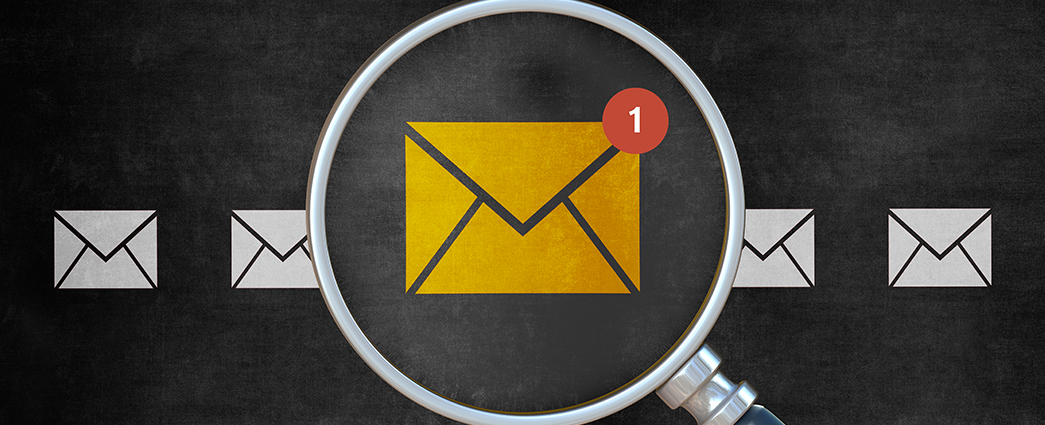A closer look at the DOL’s safe harbor eDelivery rule
On May 27, 2020, the U.S. Department of Labor (DOL) issued an additional safe harbor for eDelivery (final rule) of certain ERISA-required disclosures (covered documents). The effective date is July 27, 2020, but the DOL indicated that the final rule could be relied on before that date.

The final rule permits eDelivery to be the default method for delivering covered documents. This will greatly broaden the availability of eDelivery and is expected to result in savings of about $3.2 billion over 10 years.1
Under the final rule, there are two options for providing covered documents by electronic means:
- Notice and access—Individuals are notified by email or text that a covered document has been posted to a website and are provided a hyperlink or website address that directs the recipient to the covered document, or
- Direct delivery—The covered document is provided by an email attachment or in the body of the email (but not as a hyperlink in the body of the email).
The final rule provides a much needed, commonsense approach for eDelivery; however, there are still strict procedures that must be followed to ensure compliance. We’ve highlighted key elements under the final rule and provided our observations below.
Who are covered individuals under the final eDelivery rule?
Generally, covered individuals include plan participants, beneficiaries, or other persons who are entitled to covered documents and have either:
- Provided the plan sponsor or its service provider with an email address or smartphone number; or
- Received an employer-assigned electronic address for employment-related purposes and not solely for the delivery of covered documents (this provision is for employees only).
John Hancock’s observations: Prior to the final rule, eDelivery of covered documents was only permitted for participants who were wired at work or individuals who made an affirmative consent for use of eDelivery. Under the final rule, eDelivery may be the default, even for participants not wired at work, terminated participants, beneficiaries, and alternate payees, as long as an operable electronic address is maintained. This is most likely the single biggest contributor to the cost savings expected under the final rule.
What documents are covered under the final eDelivery rule?
Covered documents under the final rule include documents, statements, or disclosures that are required to be provided to covered individuals pursuant to Title I of ERISA, such as:
- Summary plan descriptions (SPDs)
- Summaries of material modifications
- 404a-5 fee disclosure notices
- Qualified default investment alternative (QDIA) notices
- Summary annual reports
- Benefit statements
- Blackout notices
Covered documents don’t include those that must be furnished only on request (such as the plan document or Form 5500) or documents required under health and welfare plans. The use of the DOL’s 2002 safe harbor eDelivery rule, however, may be available in these cases, if the participant is wired at work or if the individual affirmatively consents to eDelivery.
Generally, covered documents provided under the final rule must meet the same requirements as those for paper—they must be furnished no later than the due date under the ERISA regulation and be reasonably understood by the average participant. In addition, any covered document that’s provided under the final rule must be in a format that’s electronically searchable (i.e., generally, it can’t be an image or scanned file).
John Hancock’s observations: At this time, the IRS hasn’t authorized the use of the final rule for its required notices, such as safe harbor notices, qualified automatic contribution arrangement notices, eligible automatic contribution arrangement notices, and automatic contribution arrangement notices. So, for now, there are two standards plan administrators must comply with for eDelivery of annual retirement plan notices.
Initial notification must be on paper
An initial paper notification must be provided to covered individuals informing them that some or all covered documents will be furnished electronically. In addition, initial paper notification must include the following information:
- Specific email address or smartphone number that will be used for the individual
- Any instructions necessary to access the covered documents, such as login instructions
- A cautionary statement that the covered document isn’t required to be available on the website for more than one year or, if later, until superseded
- A statement of the right to request and obtain a paper version of a covered document or opt out of eDelivery altogether, free of charge, and how to exercise these rights
The initial paper notice is required for both methods under the final rule—notice and access and direct delivery.
John Hancock’s observations: The requirement that the individual’s specific electronic address (email or smartphone number) be included in the initial notice was first introduced in the final rule; it was not in the proposed regulation. Because of this, customization is required for each initial notice. Although there are tools (e.g., mail merge) to accomplish this requirement, it is still a notable hindrance under the final rule.
Notice and access under the final eDelivery rule
Generally, under the notice-and-access eDelivery method, covered documents must be posted to the website no later than the date the documents must be furnished under ERISA—and remain available on the website for at least one year or, if later, until superseded with another version. In addition, under the notice-and-access method, a notice of internet availability (NOIA) must alert participants and beneficiaries when a new disclosure is posted to the website.
The NOIA must only contain the following prescribed information:
- A prominent statement that reads “Disclosure About Your Retirement Plan”
- A statement that reads “Important information about your retirement plan is now available. Please review this information”
- The name of the covered document and a brief description, if not self-explanatory
- The website address or hyperlink, which must be sufficiently specific to provide easy access to the covered document
- A statement of the right to request and obtain a paper version of the covered document, free of charge, and how to exercise this right
- A statement of the right, free of charge, to opt out of eDelivery altogether and receive paper versions of covered documents, and how to exercise this right
- A cautionary statement that the covered document isn’t required to be on the website for longer than one year or, if later, until superseded with another version
- A phone number to contact the plan administrator or plan representative
The final rule makes it very clear that the NOIA is intended to contain only required information; however, it may—but isn’t required to—explain whether any action by the covered individual is invited or required in response to the covered document, or that no action is required. The NOIA may also include pictures, logos, or similar designs. In any case, this optional content can’t be misleading or inaccurate.
John Hancock’s observations: The retention policy that covered documents remain accessible on the website for at least one year (or until superseded, if longer) was first introduced in the final rule—it was not in the proposed regulation. Recordkeepers need to work out the effects of this new requirement relating to various covered documents. For example, it is common for only the most recent SPD to be accessible on the recordkeeper’s website. Under this new rule, even prior versions of SPDs will need to be accessible at least until the one year expiration date. Recordkeepers may need to develop procedures to maintain multiple versions of a document on a website, if applicable, without causing confusion for participants.
Annual combined NOIA
Although a separate NOIA must generally be provided each time a covered document is posted to the website, an annual combined NOIA may be provided to distribute certain covered documents that are commonly required on an annual basis.
The annual combined NOIA must be provided each year no more than 14 months from the last combined NOIA. Documents that may be provided under the annual combined NOIA include:
- SPDs
- Covered documents required on an annual basis (not on occurrence of a particular event) such as fee disclosures, annual (but not quarterly) benefit statements, annual funding notices, QDIA notices, and summary annual reports
- Any other documents that may be authorized by the DOL
- Applicable IRS notices, if authorized in writing by the Secretary of the Treasury
John Hancock’s observations: Unfortunately, blackout notices, fund change notices, and other disclosures required when a plan administrator changes service providers cannot be included in a combined NOIA; however, the final rule provides authority for the DOL and/or the IRS to include additional documents under the combined NOIA approach. As mentioned above, it is anticipated that the IRS will authorize the use of the final rule for its annual notices. We expect more to come from the IRS and the DOL on these perceived gaps.
Direct delivery by email under the final eDelivery rule
In response to many comments, the final rule added an alternative direct eDelivery method that wasn’t included in the proposed regulation. Under this method, the covered document may be sent directly by email (but not through a text message) either in the body of the email or as an attachment to the email.
Most of the information required in a NOIA is also required for this direct email method, except that the email doesn’t have to provide a web address/hyperlink or include a cautionary statement relating to the length of time the document will remain on the website.
John Hancock’s observations: Unlike the NOIA, in which a separate NOIA must be provided for each covered document (except if permitted under the annual combined NOIA), the direct delivery method uses the envelope rule, which allows plan administrators to furnish disclosures at the same time (i.e., multiple attachments), provided they all meet the timing requirement. This is especially helpful for the delivery of blackout notices, fund change notices, and other notices required when a plan administrator changes service providers.
Invalid or inoperable electronic addresses
The system for furnishing the NOIA (or, in the case of direct delivery, email) must be designed to alert the plan administrator of an invalid or inoperable electronic address. In this case, reasonable steps must be taken to cure the problem, such as:
- Promptly using a new, valid electronic address to provide the NOIA or direct delivery email, or
- Treating the individual as globally opting out of eDelivery (until a valid electronic address is obtained) and providing the paper version of the covered document as soon as reasonably practicable.
The DOL confirms that there may be other acceptable correction methods based on facts and circumstances.
John Hancock’s observations: Fortunately, the DOL dismissed comments suggesting that stricter safeguards be imposed to monitor whether covered individuals actually receive, open, read, or access the NOIA or covered documents, as this could be costly, especially for small plans. Some plan administrators, however, may choose to implement more intricate levels of monitoring for various reasons, including the Intel court case,2 which centered around whether a participant had actual knowledge of the contents of certain plan disclosures.
Special rule for severance from employment
If a covered individual with an employer-assigned electronic address, such as an email address, severs from that employer, the plan administrator must have procedures that will ensure the accuracy and availability of the email address. Alternatively, the plan administrator should obtain a new electronic address for eDelivery following the participant’s severance from employment. This is a separate procedure than just dealing with bounce backs, because employers often don’t turn off a terminated employee’s company email account, but, rather remove the employee’s access. These cases may not be captured in a systematic procedure for identifying bounce backs of invalid or inoperable email addresses.
John Hancock’s observations: The requirement to have procedures to maintain accurate electronic addresses of terminated employees will greatly reduce the number of missing participants under plans. Regardless of whether employers adopt the eDelivery method under the final rule, they should systematically obtain alternative electronic contact information at participants’ severance from employment to mitigate issues involving missing participants.
Right to elect paper or opt out of eDelivery under the final rule
Covered individuals have the right to request one free paper copy of covered documents. In addition, they have the right to globally opt out of eDelivery altogether, without charge, at any time. The plan administrator must have procedures to respond to paper requests and maintain opt-out elections. This includes individuals who are treated as globally opting out of eDelivery because of bounce backs in cases where an operable electronic address can’t be obtained.
John Hancock’s observations: Plan administrators must have the infrastructure to track opt-out elections and to respond to paper requests, as well as a system to quickly catch invalid electronic addresses in order to comply with the final rule.
Phaseout of subregulatory guidance
Over the years, the DOL, through subregulatory guidance (i.e., Field Assistance Bulletin (FAB) 2006-03, FAB 2008-03, and Technical Release 2011-03R), permitted the use of other specific eDelivery alternatives for certain DOL notices such as providing information on a continuous website or using IRS eDelivery rules. In an attempt to streamline eDelivery methods, the DOL is sunsetting the alternatives under the subregulatory guidance as of January 27, 2022 (18 months after the effective date of the final rule). The use of the alternative methods won’t be permitted after that date.
John Hancock’s observations: The elimination of eDelivery methods under subregulatory guidance is a real concern for many recordkeepers, because they may currently be relying on these methods for providing benefit statements, QDIA notices, and/or information relating to disclosures required under 29 CFR § 2550.404a-5. This is one of the many reasons why the transition to the final rule is a high priority for many recordkeepers.
Preparing for eDelivery under the final rule
Recordkeepers are diligently working toward building the infrastructure needed to comply with the provisions under the final rule. Due to the many administrative requirements of the final rule, the transition will likely involve a collaborative effort among service providers, plan sponsors, and participants.
Ultimately, the effort will be well worth it if it reduces administrative burdens and costs and improves the participant experience and engagement. Welcome to the 21st century—better late than never.
1 U.S. Department of Labor Announces Rule to Better Deliver Retirement Plan "Information Options, While Saving Billions of Dollars for Plans,” U.S. Department of Labor, May 21,2020. 2 Intel Corporation Investment Policy Committee et al. v. Sulyma, 140 Supreme Court 768, 2020.
Important disclosures
Important disclosures
The content of this document is for general information only and is believed to be accurate and reliable as of the posting date, but may be subject to change. It is not intended to provide investment, tax, plan design, or legal advice (unless otherwise indicated). Please consult your own independent advisor as to any investment, tax, or legal statements made herein.
MGTS-P43443-GE 10/20 43443 MGR1006201350846




